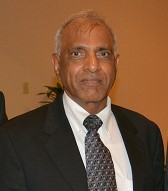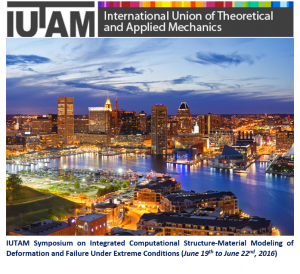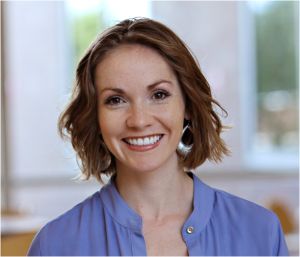Title:
On Marriage of Finite Element and Numerical Integration Techniques for Reliable Recovery of Inter-laminar Stresses in Composites
Abstract:
Professor Tarun Kant has contributed very significantly in fundamental research work in development of Co higher order beam/plate/shell theories. Most modern structures are made of advanced laminated composite and sandwich materials to exploit their high degree of anisotropy and inhomogeneity across the thickness to reduce weight without sacrificing strength, integrity and durability. In addition, to achieve optimum performance they are made of functionally graded materials (FGMs) that have continuously varying volume fractions of constituents to provide the desired functionality. Due to the inhomogeneity in material properties, accurately modeling and designing these structures is very challenging, and has been intensely researched in the last four decades across the world and Professor Kant has made seminal contributions in this area, for which he is renowned internationally. Two dimensional (2D) plate/shell theories are developed to approximate deformation fields in real three dimensional (3D) structures that have one dimension much smaller than the other two dimensions. Thus, some information in lost in this transformation of modeling of 3D structures with 2D approximate plate/shell theories. However, for designing them one needs accurate knowledge of stresses developed in the structure. Professor Kant’s recent efficient and clever technique to accurately recover these stresses (e.g., see “A general partial discretization methodology for interlaminar stress computation in composite laminates, Computer Modeling in Engineering & Science 17(2), 135-161, 2007”) by the marriage of finite element (FE) and numerical integration (NI) techniques is considered to be first of its kind in the realm of elasto-statics by his peers.

About the Speaker:
Professor Kant received his BSc degree from the University of Allahabad, his BTech (Hons) in civil engineering from the Indian Institute of Technology Bombay (IIT Bombay) and MTech in civil engineering with specialization in structural engineering from the Indian Institute of Technology Kanpur (IIT Kanpur). He spent about one and a half year in a consulting engineering firm in Mumbai before joining IIT Bombay on 20 Jan 1971 as a Lecturer. He earned his PhD degree while working as a Lecturer from IIT Bombay. He was selected as an Assistant Professor in 1978 and a Professor in 1986. He has held the positions of the Dept. Head (2000-2002), the Dean (Planning) of the Institute (2001-2003), the Chairman of the prestigious Joint Entrance Examination (JEE-1998) and the Chairman of the Central Library (1995-1999) with great distinction. The Institute appointed him as an Institute Chair Professor from 31st December 2009. Professor Kant was elected a Fellow of the Indian National Academy of Engineering (INAE) in 1999, a Fellow of the Indian Academy of Sciences (IASc) in 2004, a Fellow of the Indian National Science Academy (INSA) in 2007 and a Fellow of the National Academy of Sciences, India (NASI) in 2011. He is the first and only civil engineer in the country to get elected to all the four national academies. He is a recipient of the Burmah-Shell Best Paper Prize. He was awarded the 1979 Jawaharlal Nehru Memorial Trust (U.K) Scholarship and the 1992-’93 European Commission (EC) Senior Faculty Exchange Fellowship, both by the Government of India. IIT-Bombay, on 13 March 2007, conferred the 2006 Professor H.H. Mathur Award for Excellence in Research in Applied Sciences in recognition of his outstanding work in the area of Mechanics of Composite Materials and Structures. He also received the 2009 Khosla National Award for his life time achievement in the field of engineering. He is also a recipient of the 2010 IIT Bombay Research Paper Award. IIT Bombay, on 4th April 2012, conferred on him the 2011 Life Time Achievement Award. ICCS17 (17th International Conference on Composite Structures, Porto, Portugal, 17-21 June 2013) honoured him by calling him a legend and recognized him as a pioneer in initiating a new direction in mechanics of composites. Very recently he received the APACM Senior Scientist Award of the Asia Pacific Association of Computational Mechanics (APACM) on 12 December 2013 during APCOM2013 in Singapore and the ICCES (International Conference on Computational and Experimental Engineering and Sciences) Lifetime Achievement Medal in Reno, Nevada, USA on 20-24 July 2015 for making seminal contributions to composite materials and to the education of generations of students in India. He occupies the position of an Institute Chair Professor in the Department of Civil Engineering at IIT Bombay and has teaching and research experience of 48 years. He was a visiting professor at University of Wales, Swansea (1979-’82), University of Cambridge (1993) and University of California, Los Angeles (2005).
Faculty Host:Prof. Somnath Ghosh, 203 Latrobe, 410-516-7833, [email protected]
For more information, please contact Khairul Bariah Abd Majid PhD, 410-516-5033, [email protected]









